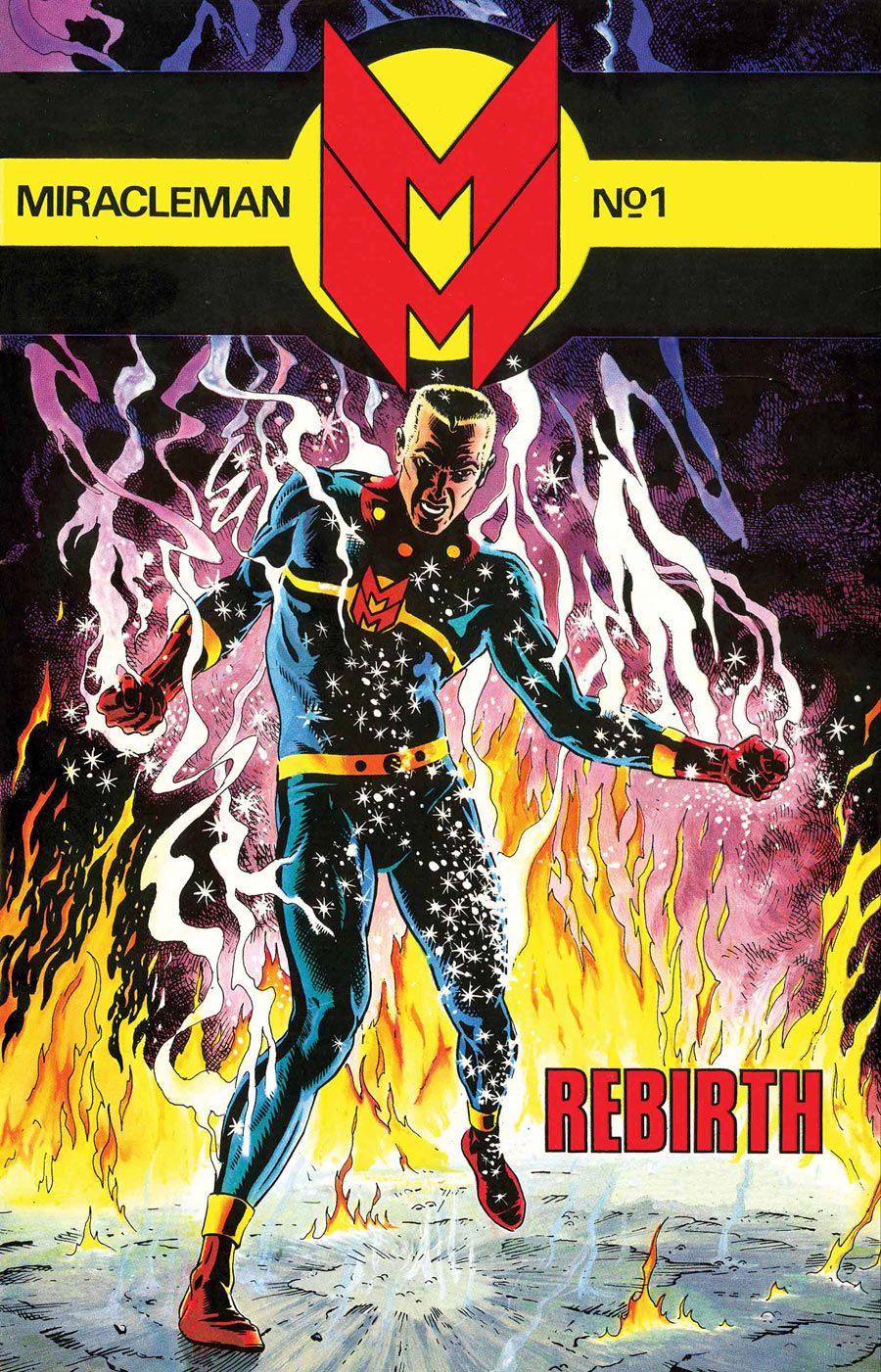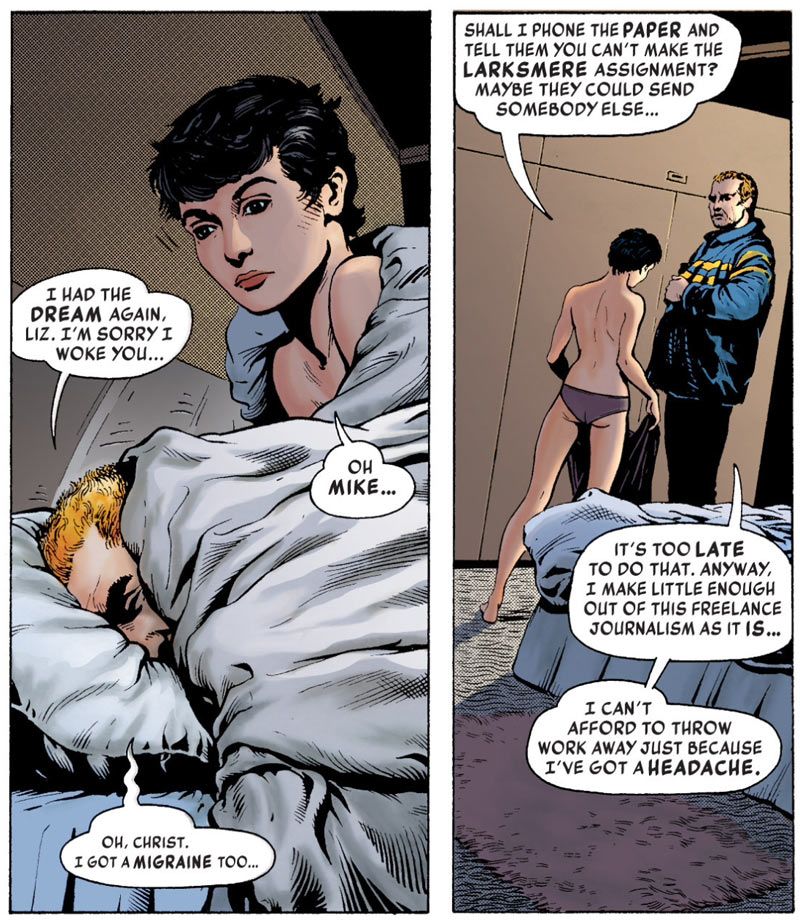On January 15, Marvel Comics released the long out of print "Miracleman" #1, recolored, re-lettered -- and perhaps reimagined. The complicated legal ownership of the series resulted in nearly twenty years of the title being out of print, much to the dismay of fans. The new reprinting begins with Alan Moore's reinvention of the character, a run which lasted sixteen issues before being turned over to Neil Gaiman. After decades of legal disputes over the ownership of the character and comics, Marvel announced in 2009 that it had acquired all rights to Mick Anglo's creation. Unfortunately, the controversy surrounding the series is far from over, as Marvel has chosen to make artistic changes to the original content available in its iOS app storefront.
While the print and comiXology digital versions remain true to the original, the Mass Market edition available via Marvel's app includes an editorial change. A pair of purple underwear was added to the bare bottom of Liz Moran in an opening scene where readers meet the character for the first time, and the underwear makes a return appearance in the second issue, released January 27. Although this change is small, it raises some concerns regarding the future of the series, which goes on to have some unquestionably vivid content, including an intensely realistic childbirth, male rape and the graphically violent deaths of 40,000 London citizens.
By now, publishers are familiar with the risk of seeing their product rejected by Apple's curated marketplace, so it makes sense that they may approach content with a watchful eye in order to maintain a presence in one of the world's largest digital storefronts. In 2013, Apple removed Matt Fraction and Chip Zdarsky's Image title, "Sex Criminals," from the comiXology-powered iOS apps based on undisclosed violations of its vague content policy. The question of Apple's understanding of comics content is a separate issue, but they have certainly created a climate for overly cautious submissions.
The Marvel app is rated 12+, meaning content available in it may contain suggestive themes, infrequent alcohol and drug use, mild realistic violence and prolonged graphic or sadistic realistic violence in the available material, all of which seems incredibly liberal for that young of an audience. Interestingly, the comiXology app is rated 17+, which likely accounts for why it offers "Miracleman" in its unedited form.
Since the edited release, comic fans have been regarding this as an act of censorship, which raises some interesting questions about the perception of nudity in comics, as well as Marvel's plans for the graphic content in upcoming issues: Why is female anatomy displayed in issue #1 more potentially offensive than the pre-cautioned displays of graphic violence?


The original panel shows a posterior view of a standing Liz Moran talking with her husband while they get ready for work. Their dialogue isn't sexually charged, nor is her pose provocative. In fact, Liz's rear end appears to be far below the threshold of suggestive themes Marvel cautions about in its app description. The editorial decision appears to send the message that the nude female body can only be viewed in an extremely suggestive manner, no matter the context.
If a single butt warranted editing, it's concerning to speculate how Marvel will handle legitimately graphic scenes in upcoming "Miracleman" issues released through their app. In issue #9, a character gives birth over multiple pages of the book, with great attention to the scientific details of child delivery, including a display of parts that would now be covered by purple panties. In issue #15, a character goes on one of the most violent rampages in superhero comics history, destroying the entire city of London. People are torn apart, impaled, skinned and tormented by a rain of severed hands and feet. Will this content be similarly edited, and if so, what does that mean for the creative integrity of the story? These moments are intended to be shocking, to make readers feel, to connect us to the ideas of power and villainy -- mature themes, to be sure, and thought provoking ones that set the stage for Moore's later work on acclaimed titles such as "Watchmen." If these moments are at risk of being censored, the story of "Miracleman" becomes something else, a work out of sync with the vision of its creators.
Marvel's move to restore "Miracleman" is an excellent thing, as new generations willnow be able to experience the formative work of two of the most legendary writers in the industry. At this point, it remains unclear what future editorial changes will be made for Marvel's app version, but hopefully the decision makers will find a way to preserve the story as intended for readers to consume in all formats.
When approached by CBR for this article, Marvel Comics declined to comment.



